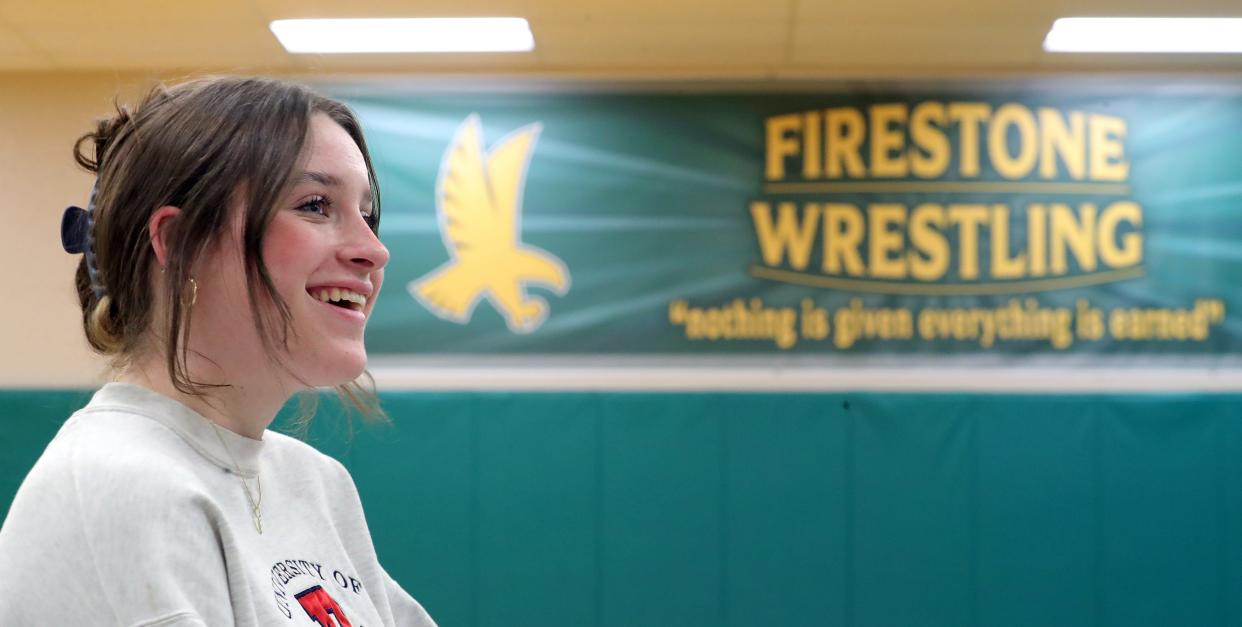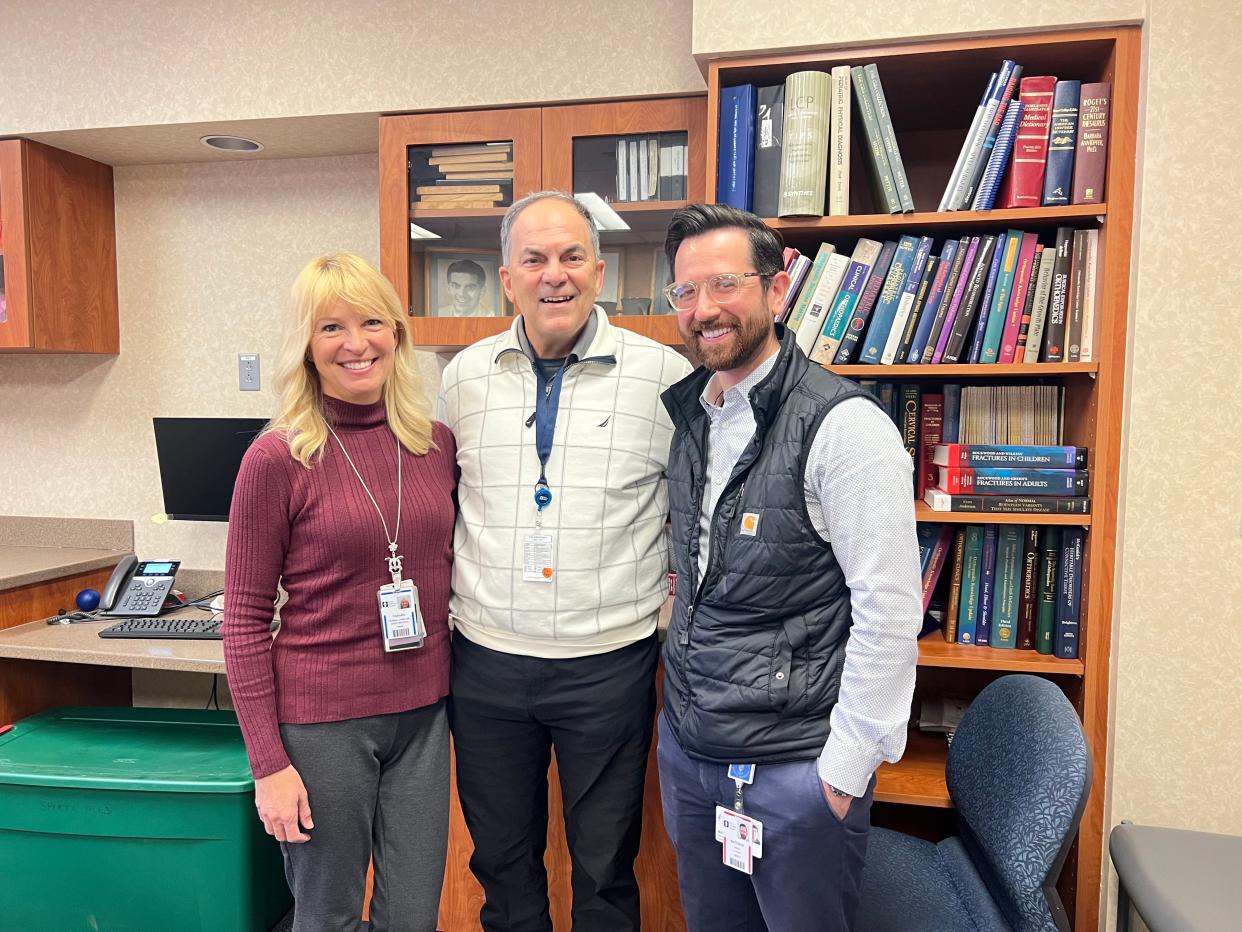Akron Children's pioneers 'cool' approach to treating concussions in young athletes

A new study led by researchers at Akron Children’s Hospital has found a unique way to limit concussion symptoms for athletes.
Dr. Joseph Congeni, the director of sports medicine at Akron Children's, has done concussion research since the late 1980s and 1990s.
From 2017 through 2021, Akron Children's and several other hospitals worked with a company called TecTraum to test the effectiveness of prototype device that uses hypothermic therapy, which helps cool the brain down after a hit.
The helmet-type device — called Pro2cool — comes in a lightweight backpack.
The device reaches a temperature of 42 degree to cool specific areas of the head and neck after a concussion. Each treatment lasts 30 minutes.
According to study results published earlier this year in the Clinical Journal of Sport Medicine, athletes treated with Pro2cool showed a 14.4% reduction in concussion symptom scores after one treatment and 25.5% reduction after a second treatment compared to those who received standard care, which focuses on rest.
"For me as a clinician, one of the things that interests me about this is that if we get started with them pretty early on and we start bringing down that symptom score, we have a lot less chance that they’ll be one of those who can’t get back to sports," Congeni said.
How the cooling therapy research worked
Dr. Matthew Smith, a staff scientist at Rebecca D. Considine Research Institute at Akron Children’s, and advanced practice nurse Tamara Murray were in charge of the control experiments at Akron Children's.

A total of 167 young athletes ages 12 to 19 with sports-related injuries were evaluated as part of the study. Other participating sites were Cincinnati Children's, the University of Michigan and Dayton Children's Hospital.
“What made this study a little bit different was the age population," Congeni said. "So many studies that have been done have looked at the college and professional age. But we looked at a pretty young population that people haven't looked at."
During the study, Murray placed the patients into two categories, one with the cooling therapy and one without. She did not let them know which group they were in and gathered the results over time through their sports concussion assessment tool results.
"Traditionally, ice has been used to reduce pain and swelling in muscle injuries," Congeni said in a prepared statement. "Now, this research – along with our previously published pilot study using pro2cool – has found the same to be true for concussions."
Firestone wrestler shares her concussion experience
Firestone High School wrestler Sarah Meeker, 15, knows firsthand the struggles of recovering from a concussion.
Sarah suffered a concussion in November 2023 during Thanksgiving week. She was wrestling one of her teammates when they collided, hitting their heads. Meeker at first only saw that her eyebrow was split open and thought she was okay. It wasn’t until two days later when her school’s athletic trainer, Kyle Harper, saw that she would need further evaluation for new symptoms that appeared.
“With most concussions, symptoms can be delayed," Harper said.
Meeker had to miss seven weeks of her wrestling season due to her injury.
Sarah did not get cooling therapy with the Pro2cool device. However, she believes her recovery time could have been shorter had she received the treatment.
"I was already being told to ice my head," she said. "I feel like the cooling device could’ve helped."
Harper agreed and said that the device “will decrease trauma and help heal faster.”
Sarah was able to fully recover toward the end of January and went on to win two-out-of-three matches in her tournament, won districts and made it all the way to regionals.
Even though she wasn’t able to experience the cooling therapy, she definitely believes that it will help other athletes.
“I think it's cool," she said. "It will give the person who is doing it so much relief. It will release the strain out of the head, eyes, and neck. It will make them feel like a person again."
What's next with cooling therapy for concussions?
So far, the FDA has approved two out of the three required reviews. If Pro2cool makes it through the last approval, Akron’s Children hopes that the device will be available in emergency rooms, urgent care and schools.
“I think it’s an important piece, because it’s one of the first things that's actually a treatment piece rather than a prevention or an after-the-fact," Congeni said. "There aren't many others out there that's actually treating someone after they've been concussed."
This article originally appeared on Akron Beacon Journal: Akron Children's pioneers cooling therapy to treat youth concussions
